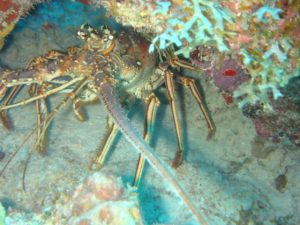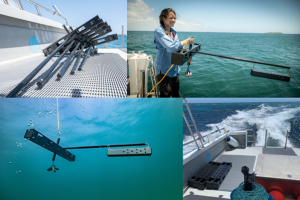The recently announced Global Ocean Wildlife Analysis Network will collect unique and important data from across ten UK Overseas Territories, increasing our knowledge and ability to support the protection of these valuable marine environments.
The new underwater network of Baited Remote Underwater Video Systems (BRUVS) is a world first and is being delivered by Cefas (as part of the Blue Belt Programme), in partnership with Blue Abacus.
As part of a new blog series from across the UK Overseas Territories involved in the new camera network, we hear from Kafi Gumbs, Director of the Fisheries and Marine Resources Unit in Anguilla about how they plan to use the new cameras, the biodiversity they may capture, and ultimately how it will help them to protect their marine environments.
Kafi S. Gumbs, Director, Fisheries and Marine Resources Unit, Anguilla:
Anguilla is a tiny UK Overseas Territory situated in the Caribbean. It has beautiful coastlines that the residents rely heavily on, demanding nearshore fisheries, and a rich seafaring culture. However, the island, like most others in the Caribbean, is currently experiencing a visible decline in the overall health and abundance of its marine and coastal resources. This is coupled with the need to sustainably develop the island’s offshore fisheries.
The Anguillan Fisheries and Marine Resources Unit view the launch of the Global Ocean Wildlife Analysis Network as the answer to many questions and unknowns in the remote areas of Anguilla’s marine environments. The fact that the BRUVS technology is non-intrusive and the fisherfolk on the island can participate in every aspect of the project – from its introduction, to deployment, data collection and analysis – is extremely exciting. The Fisheries and Marine Resources Unit and by extension, the Anguillian fisherfolk, are extremely excited to welcome this new technology in the coming weeks!

The technical capacity of the BRUVS and the assistance with its use, through Cefas and UWA Professor Jessica Meeuwig (co-founder of Blue Abacus), means that Anguilla will be able to collect an abundance of data and make other important observations. The expected main functions of the BRUVS will be to collect and monitor abundance and migration data on pelagic fish, such as various species of tuna, wahoo and mahi mahi. The cameras will also help to collect data on the fish aggregation device (FAD) fishery, and determine the importance of specific marine protected areas to various species, such as the economically important Panulirus Argus (Caribbean spinny lobster), Lutjanus campechanus (red snapper) and Scaridae (parrotfish) during their juvenile phases.
Ultimately the data collected from the BRUVS distributed in Anguillan waters will improve fisherfolk and fisheries managers understanding of the marine environment. This will lead to greater stewardship, better management and stronger protection of Anguilla’s marine and coastal resources for future generations.
